Home >Hardware Tutorial >Hardware Review >Apple and Huawei both wanted to make a buttonless phone, but Xiaomi made it first?
Apple and Huawei both wanted to make a buttonless phone, but Xiaomi made it first?
- WBOYWBOYWBOYWBOYWBOYWBOYWBOYWBOYWBOYWBOYWBOYWBOYWBOriginal
- 2024-08-29 15:33:58685browse
According to reports from Smartprix, Xiaomi is developing a buttonless mobile phone codenamed “Suzaku”.
This news says that this mobile phone, codenamed Zhuque, will be designed with an integrated concept, use an under-screen camera, and be equipped with Qualcomm Snapdragon 8gen4 processor. If the plan does not change, we are likely to have it in 2025 Saw it coming.
When I saw this news, I thought I was back in 2019 - when Xiaomi released the Mi MIX Alpha concept phone, the surround-screen button-less design was quite amazing.
This is the first time I have seen the charm of a buttonless mobile phone.
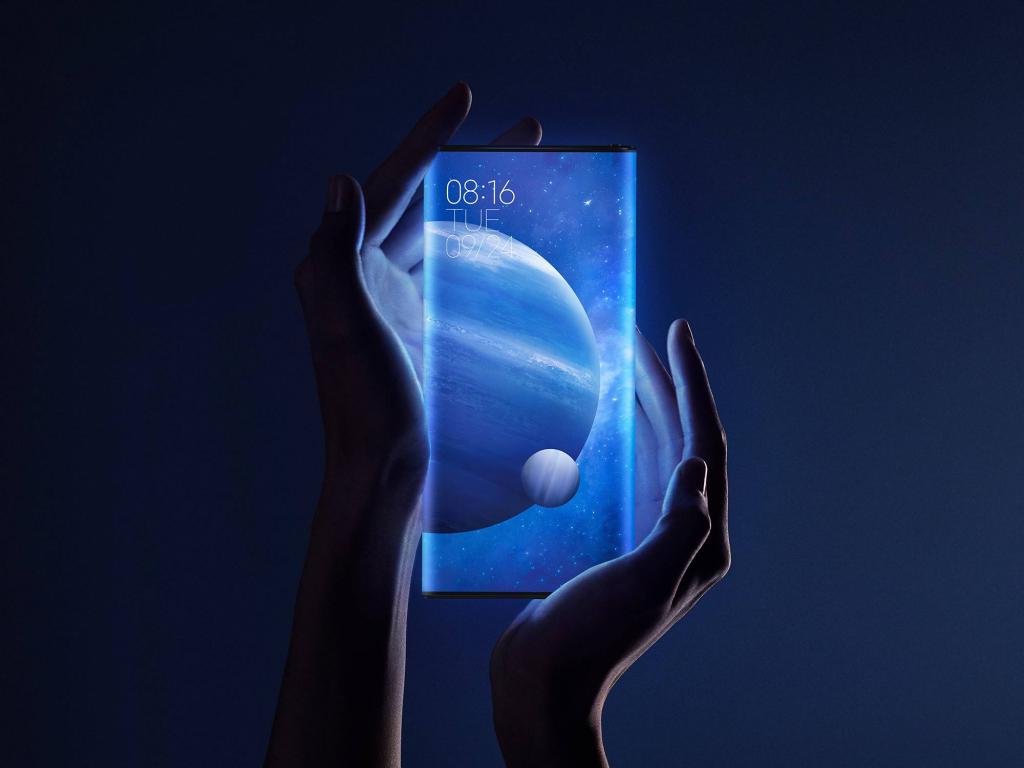
If you want a piece of "magic glass", you have to kill the buttons first
In "The Biography of Steve Jobs", Steve Jobs once Expressed:
I hope that the mobile phone can be like a piece of "magic glass", simple, thin and light, without unnecessary elements.
If we say that in the early history of smartphones, all mankind’s imagination about mobile phones came from one stone, then eight buckets of them fell on this screen that interacts with us. One screen carries all functions and interactions. The glass is the "dream machine" of all consumers and manufacturers.
If you want to get such a piece of "glass", the first step is to kill the buttons.
This kind of imagination has been around for a long time - every year when the new iPhone is launched, many concept phone pictures appear on the Internet. In addition to the iPhone 18 memes similar to the "huge screen", the most fascinating What attracts people’s attention is the iPhone without side buttons.
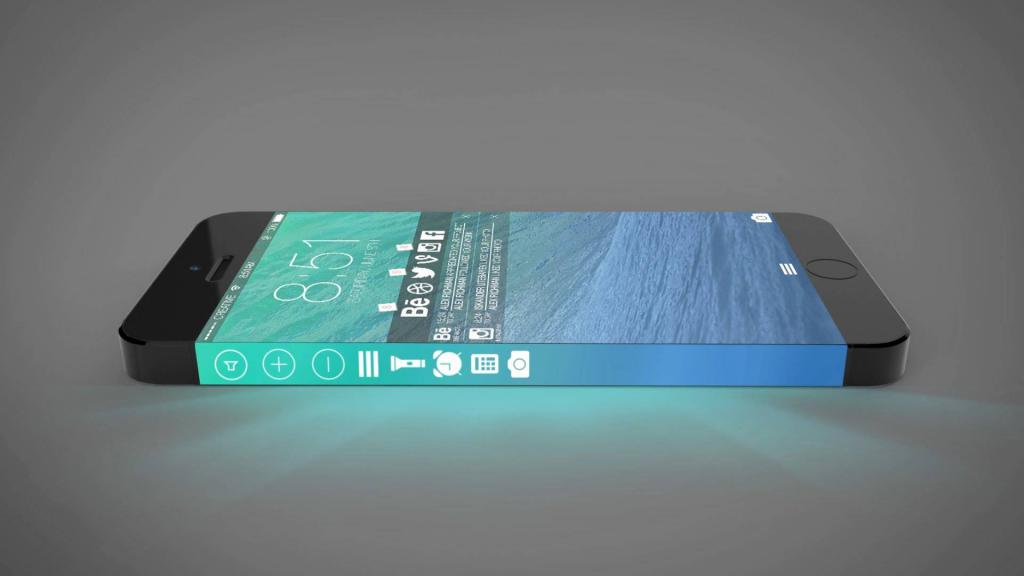
▲ Does it look familiar to me?
Later, Xiaomi Mix and iPhone Hope.
What is unexpected is that domestic manufacturers suddenly began to exert their efforts, and the sudden appearance of Meizu Zero appeared in everyone's eyes like thunder on a sunny day.
On January 23, 2019, Meizu Technology officially released Meizu Zero, which does not require any qualifiers - it is the world's first smartphone without openings.
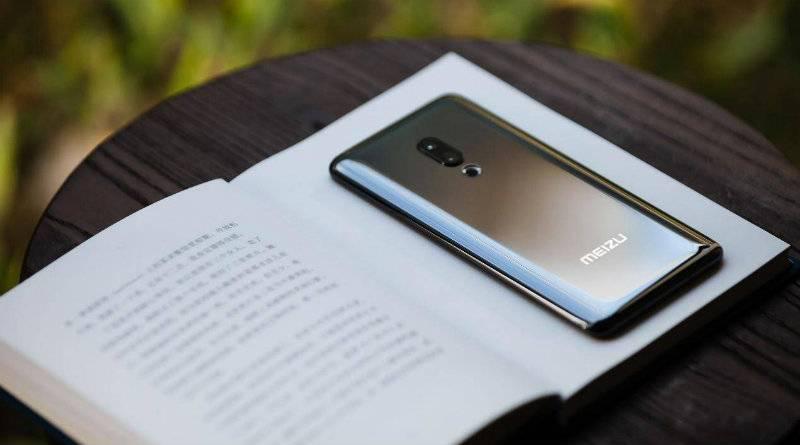
Even now that Meizu has transformed, Meizu’s design is still one of the hotly discussed topics, and is known as the “Whampoa Military Academy” of mobile phone design.
This design-first concept is most vividly reflected on Zero: all physical buttons are canceled and a virtual side-pressure button solution is used to make the feel and experience purer.
Zero uses pressure detection technology and capacitive positioning technology to virtualize the power and volume buttons on both sides of the fuselage, and uses an X-axis linear motor to provide feedback on the activation of the virtual buttons.
For the interface at the bottom of the phone, Meizu also made way for the design, achieving wireless charging through the coil on the back of the phone, completely eliminating the interface at the bottom of the phone.
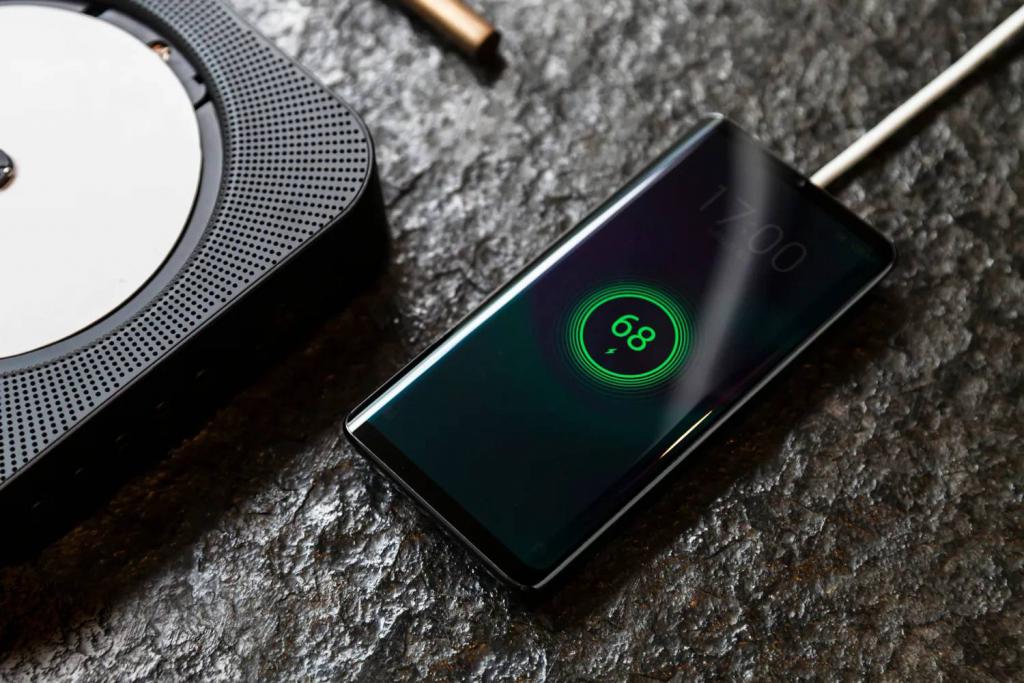
This phone brings what is imagined into reality and puts it in front of everyone. Even if Meizu claims that this is just a concept phone, there is no guarantee that it will Mass production, but still stirs up waves with one stone.
While everyone was still immersed in the science fiction and elegance of Meizu Zero, vivo also dropped a bombshell.
On January 24, just one day after the release of Zero, vivo released its first 5G all-in-one mobile phone - APEX 2019 in Beijing.
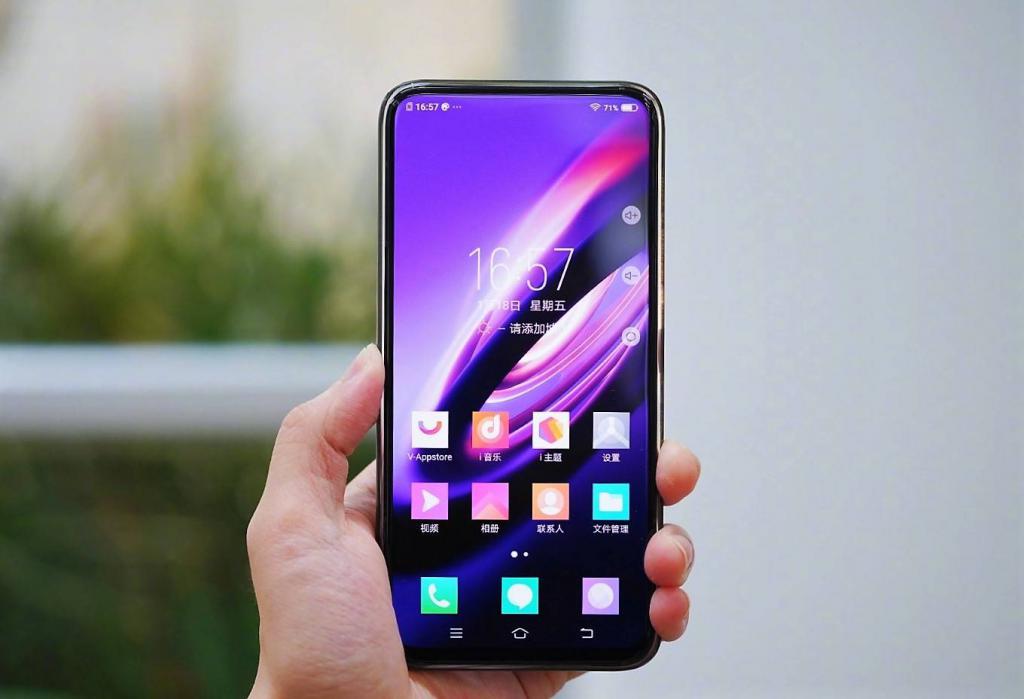
vivo calls this design “Super Unibody”, and its concept is very straightforward – more technology, less design.
Although there are some differences with Meizu’s concept, they achieve the same goal by different approaches. The answer given by vivo is very similar to Zero - vivo APEX "physically eliminates" all the buttons on the fuselage and sets up alternating Capacitive and pressure touch points can simultaneously detect press and touch in a certain area, accurately locate the user's finger, and determine the target function of the operation.
Unlike Meizu, vivo keeps the body interface contacts on the back, and uses stronger magnetic attraction to attract the nearby data cable interface to achieve the purpose of charging and transmitting data.
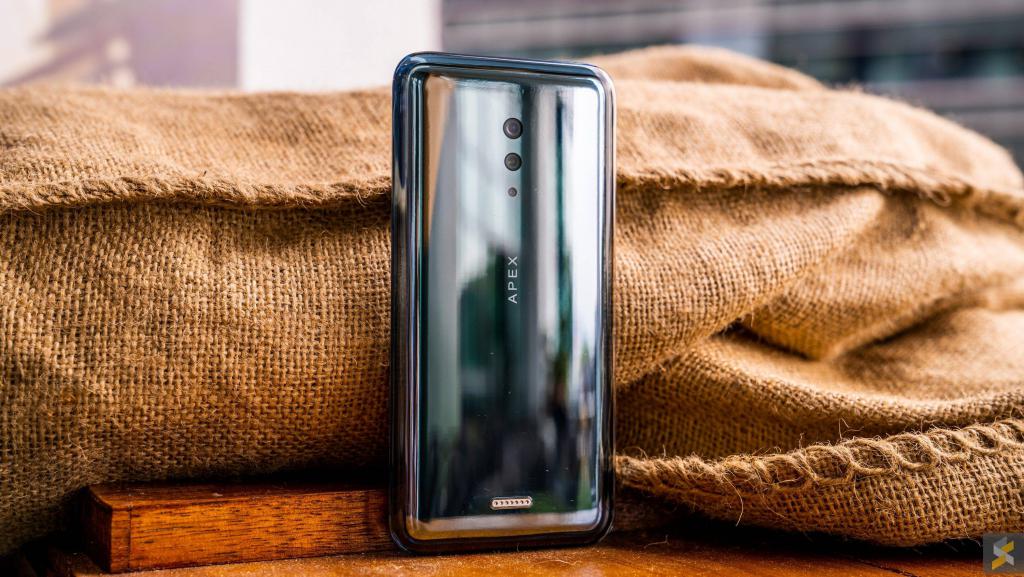
Just over half a year later, when the popularity of the two concept phones had just subsided, Xiaomi launched a more radical thing - Mix Alpha

要是说前两台只是印证相关技术的可行性,那么小米推出的 Mix Alpha 毫无疑问是把想象搬进了现实中——一面巨大的环绕屏从正面围绕到背面,最后在后置摄像头处交汇,屏占比高达 180.6%。
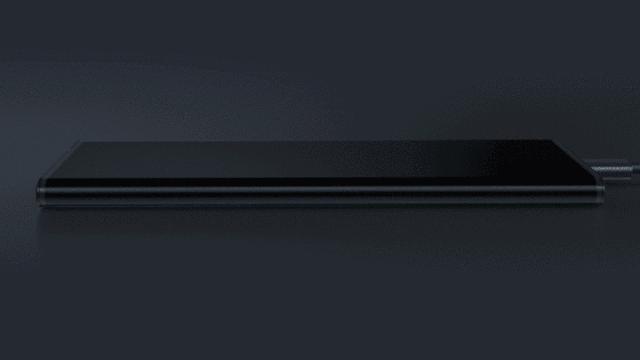
▲ 这个角度的 Mix Alpha,非常像曾经想象中的手机概念图
不过,相比屏幕的梦幻,小米在机身按键上,还是保守地稳了一稳—— Mix Alpha 只去掉了实体音量键,依然保留着实体电源按键,以应对系统故障或是机器卡死等问题,并且留下了充电接口。
相比小米 Mix Alpha、vivo APEX 与魅族 Zero 的激进,华为就要稳重许多了。
2019 年底,在众多概念机的轰炸下,华为在德国召开发布会,发布了当年的当打旗舰—— Mate 30 Pro。
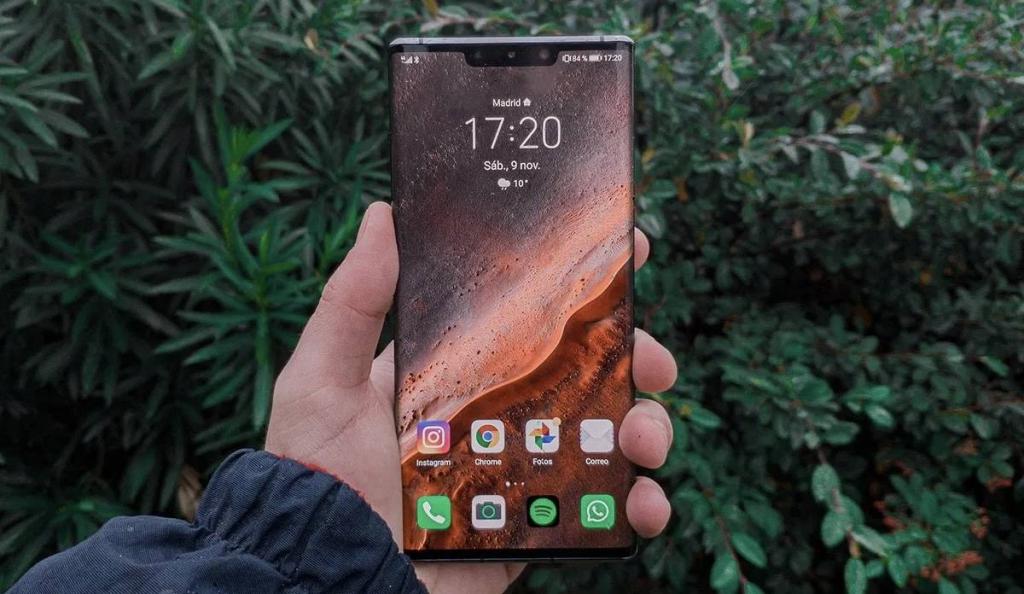
由于是量产型号,华为并没有一路激进到底,而是要综合交互、用户学习成本以及易用性等多方面考虑,最终选择用虚拟按键代替实体音量按键,并在手机侧面保留一颗压缩到极致的实体电源键。
在这套方案中,虚拟按键的唤醒采取了触摸方案,当用户需要调整音量的时候,双击屏幕边缘,并用手指上下滑动,就可以调整音量。
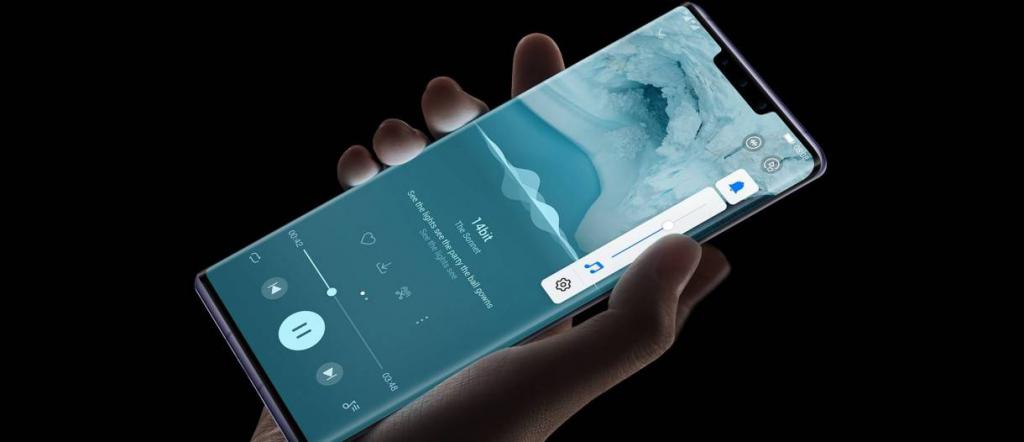
短短一年的时间里,为了追求一块「魔力玻璃」,有诸如魅族、小米这样的激进选手,不惜代价地制造和尝试概念机,寻求方案落地的可能性,也涌现了华为这样稳扎稳打,从小处入手,一步步尝试的厂商。
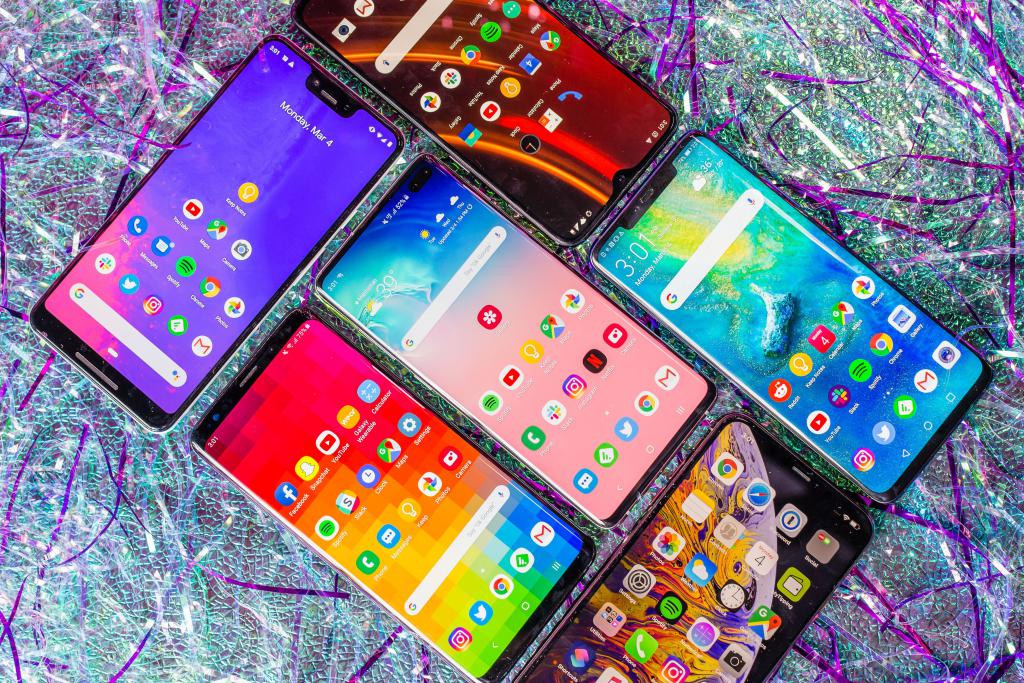
好一个你方唱罢我登场。
但可惜的是,这样的盛况并未持续太久。
时代的遗憾,昙花一现的无按键手机
无按键手机,这个炫酷的概念没有持续下去,是因为大家发现,这个形态下的手机进入了一个怪圈:用更复杂的交互方式,去换取更简洁的机身设计。
由于魅族 Zero、vivo APEX 与小米 Mix Alpha 都是概念机或少量出售,我们就看看最稳重的量产机型:华为 Mate 30 Pro 上的虚拟音量键。
华为 Mate 30 Pro 使用了电容感应的方案,也就是触屏方案来解决虚拟按键的唤醒,整个手机上半部分的两侧都可以通过双击侧边唤醒音量调节功能。
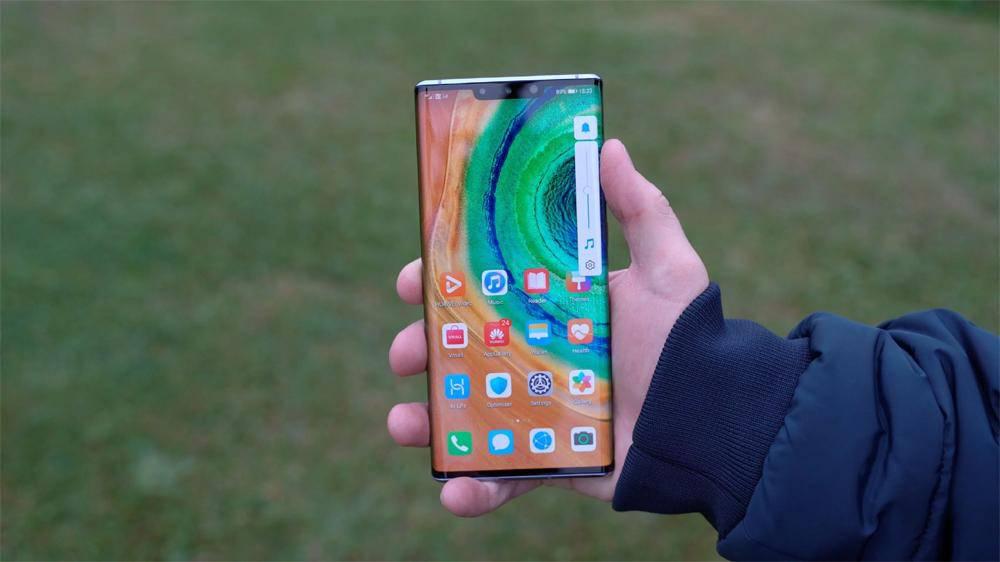
对于这个功能,用户的评价相当两极分化,每个不喜欢的理由,都会提到一个关键点:这颗虚拟按键的交互并不友好。
首先,就是操作的不直观,并且是物理上的不直观。
不知道你有没有遇到过电话或是语音音量不合适的情况,当这种我们眼睛无法直视屏幕,却需要调整音量时,虚拟按键常常让人手忙脚乱。
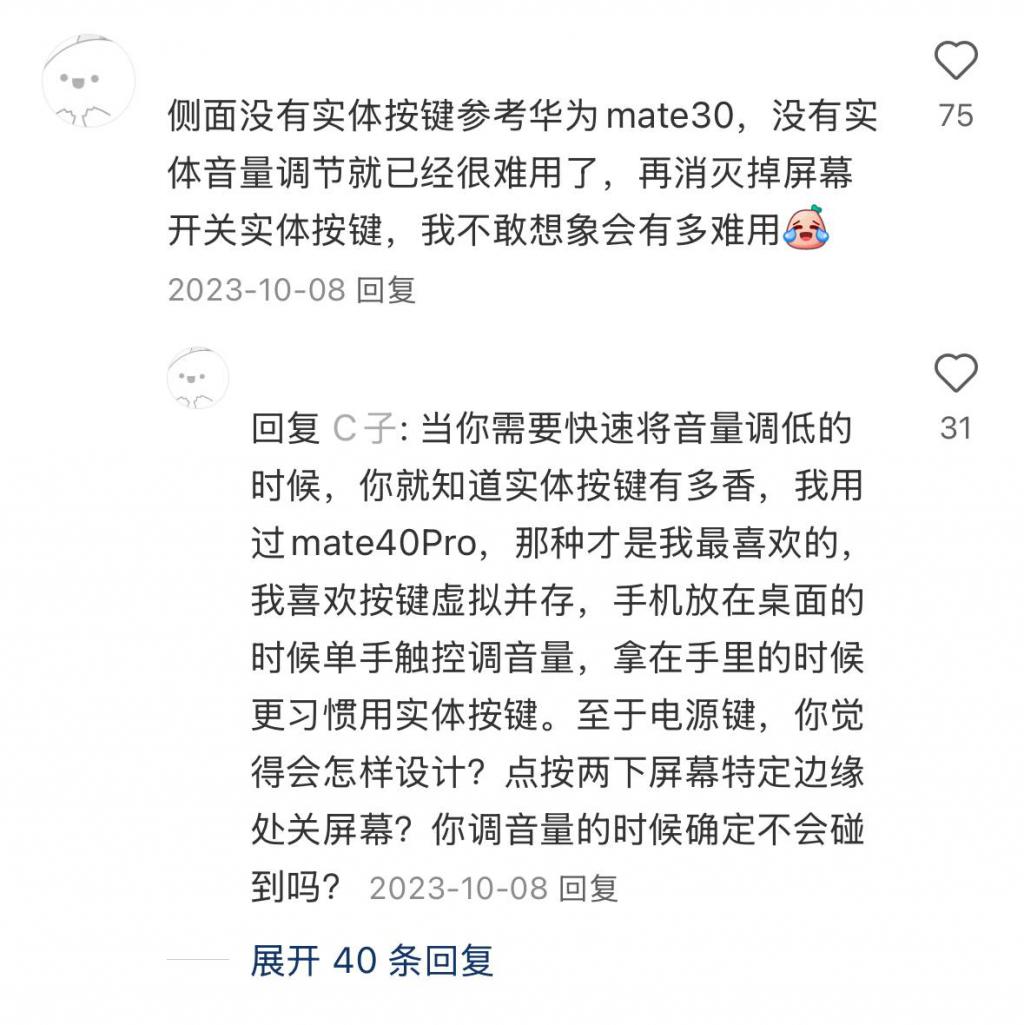
▲ 小红书上,关于虚拟按键的讨论很激烈
其次,交互成本的上升也不可忽视。
曾经通过实体音量键,我们只需要一次按压就可以完成的交互,在虚拟音量键上,我们需要三个动作才能达成目的。
这些细节看似不起眼,影响却是巨大的——使用手机的体验产生了阻塞,用户需要频频转移注意力,去解决虚拟按键的问题。
苹果在早期的广告中,有一句经典台词,用以描述手机设计的简化与交互间的矛盾:
Simplicity is the ultimate sophistication.
简约是终极的复杂。
看来,让交互保持简单这件事,比将手机做简单,要难太多了。
最后,是误触上的问题。
虽然华为已经为这颗虚拟按键想尽了办法做适配,为了防止误触,需要双击边缘屏幕才能唤醒这个功能,但当手机放在口袋里,或是重复更换握持动作时,还是存在误触风险。
更难受的是,很多软件的双击点赞功能,并未对虚拟音量键的唤醒做适配,于是用户只能被迫「误触」点赞。
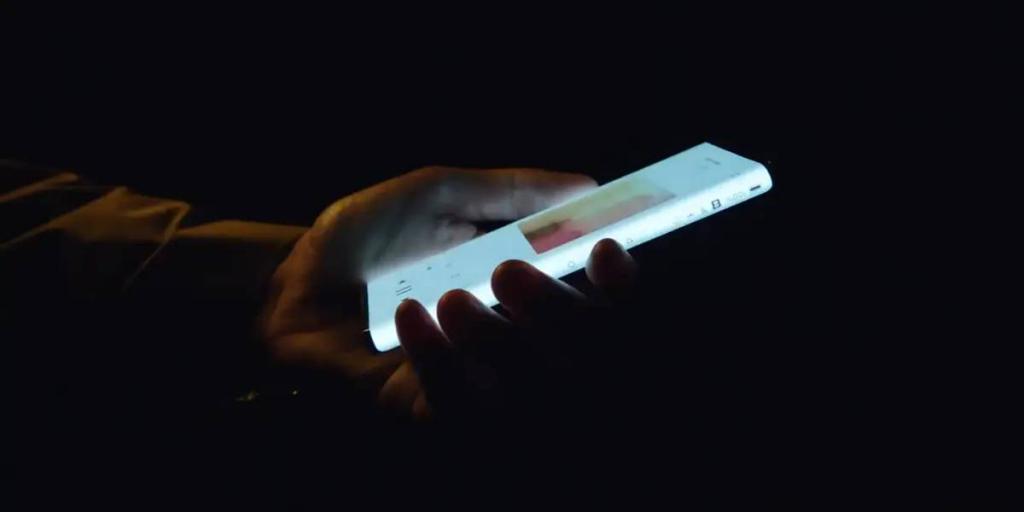
除了交互外,维修也存在相当大的问题。
当华为 Mate 30 Pro 的瀑布屏磕碰或滑落导致瀑布屏损坏,需要 1499 元的价格才能维修。
如果说只是成本的上升,那还勉强可以接受——苹果的维修价格也从来不便宜。
但当维修都充满了风险,就让人很为难了。
在二手平台上,我曾经看到过几台小米 Mix Alpha,它们都处于一个「尸体」的状态。
并非机身出现了任何问题,而是由于电池的故障,手机失去了能源的供应,已经无法开机了。
而由于小米 Mix Alpha 上大面积的屏幕环绕,导致手机的维修难度非常高,任何维修操作都需要极为小心,尤其是在屏幕和内部组件的拆卸和重新安装方面,一旦不小心,就会造成额外的损坏。
如此高的维修风险,对于用户来说无疑是巨大的负担。
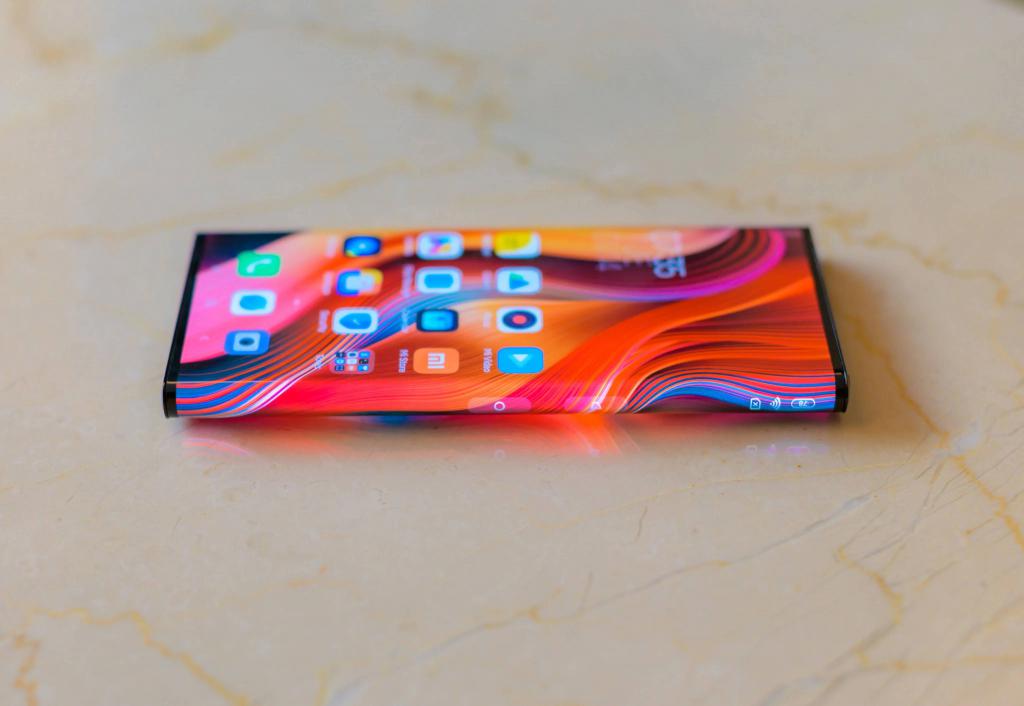
综合考量之下,无按键手机的尝试与其他所有可能一起,在多轮商业验证后迅速冷却,厂家的设计与方案开始趋近,曾经无比靠近「想象中的手机」的虚拟按键方案,再也无人问津。
AI 的出现与硬件的发展,给无按键手机带来了新的可能
手机设计策略的统一,几乎将无按键手机已经埋没在了历史中,人们转向使用折叠结构这样的复杂的设计来追求手机更多的形态可能。
所以,在看到小米正在开发无按键手机的消息的时候,我相当惊讶。
但转念一想,AI 的发展与按键技术的进步,也许已经能够帮我们解决一些痛点。
目前的 AI 对于人类自然语言的识别已经空前强大,比如 Pixel 的 Gemini 助手已经可以联系上下文进行理解,还能通过复杂的算力支持,在手机上实现更加智能的交互方式。
在这样的算力支持下,智能手机出现了新的交互方式,通过麦克风、摄像头等传感器,手机可以实时捕捉和理解用户的意图,知道我们想要做什么,从而主动解决更多问题。
这给了一个干掉实体按键的可能。
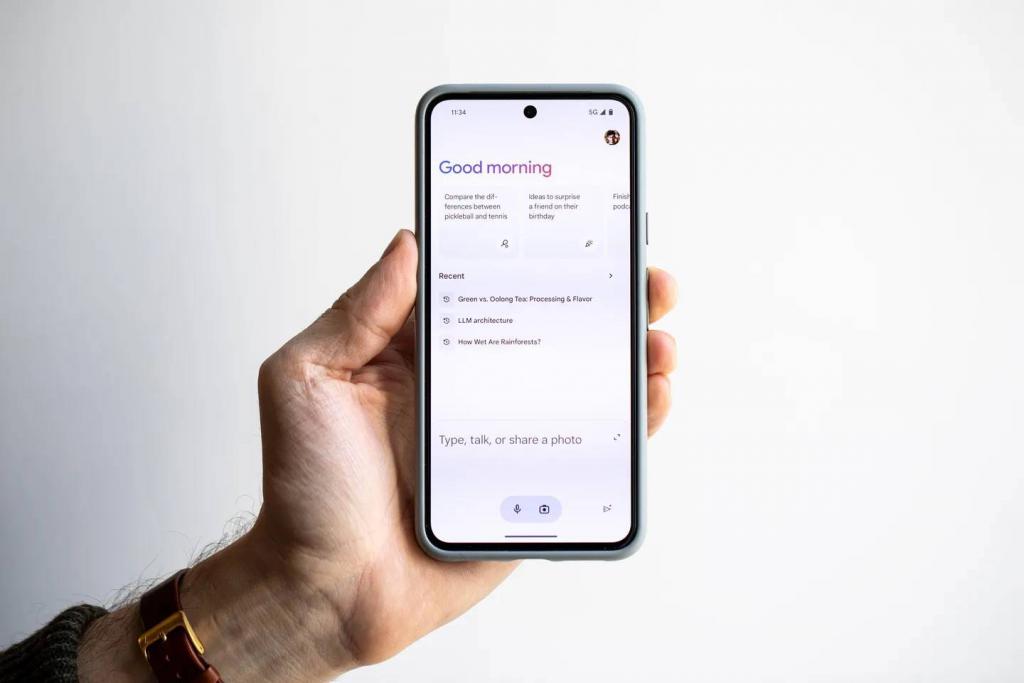
同时,在 AI 的加持下,加强对于人类自然行为的识别,自然也不在话下。
华为很早就推出了用手势隔空操作手机的功能,而通过 AI 深度学习,可以大幅度提高手机对于用户的各种手势动作的识别,提供与物理按键类似甚至更丰富的功能体验。
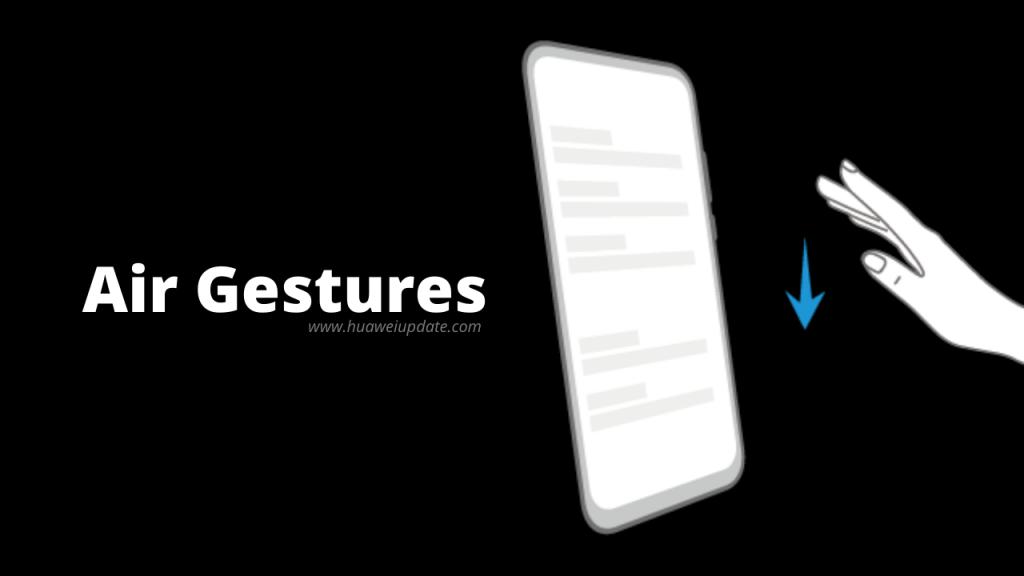
除此之外,AI 也许还可以做更多事,减少用户对物理按键的依赖,例如通过光线传感器、网络形态和连接状态、定位来判断用户所处的环境,调整到适合的音量。
这五年里,不只软件取得了巨大进步,硬件也有新的进展。
iPhone 16 在爆料中的那颗全新拍照按键,提供了一个启发:这颗按键支持滑动与多级操作,同时它并非可以真实按压的按键,而是类似于 iPhone 8 与 MacBook 的触控板,具备压感传感器,通过震动给予用户反馈。
同样没有机械结构,这一设计方案为虚拟按键的实现提供了可能性:虚拟按键通过多种状态来承担更多交互与功能的可能性,将原本需要多个按键实现的功能集成到少数几个触控区域或虚拟按键中,优化手机的整体设计,减少硬件复杂度。

现在,一台 Mix Alpha 在闲鱼上也能卖到上万,且有价无市。
虽然有稀缺性的影响,但也不能否认:无按键手机,这个从智能手机历史早期就备受期待的方案,虽然屡经失败,仍在人们心中种下了一颗种子。
小米「朱雀」,就是这颗种子时隔五年破土而出的嫩芽,它到底能否开新花结新果,值得我们期待。
The above is the detailed content of Apple and Huawei both wanted to make a buttonless phone, but Xiaomi made it first?. For more information, please follow other related articles on the PHP Chinese website!
Related articles
See more- Being held grudge by Ni Shuihan's intelligent NPC makes me feel bad...
- Actual measurement of signal strength comparison between iPhone 15 and Mate60P, results revealed
- Huawei Mate 60 Pro signal test: There are regrets, but there are more surprises
- Appreciate the multi-faceted charm of Aichir Time Elf: both fresh and smart, as well as smart and multi-functional
- Actual test results of Huawei satellite calls: the sound quality exceeds that of professional satellite phones

